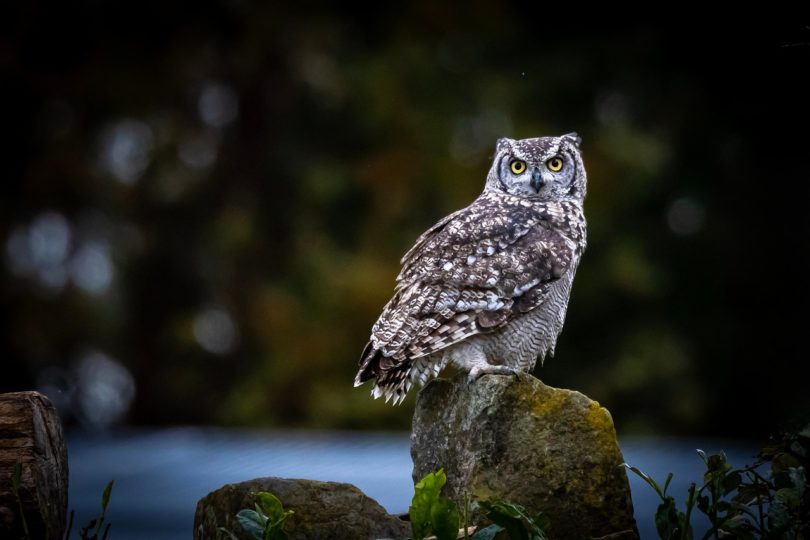When the sun dips below the horizon and the world begins to quiet down, a new shift of workers takes over the night sky—owls. These mysterious birds, with their wide, unblinking eyes and silent wings, have fascinated humans for centuries. Often symbols of wisdom, mystery, or even superstition, owls are masters of the dark. But what exactly do they get up to while we’re fast asleep? Let’s take a closer look at the secret nightlife of owls.
Masters of the Dark
Owls are primarily nocturnal, meaning they are most active during the night. Their bodies are perfectly adapted to thrive in low light. For starters, their large forward-facing eyes gather as much light as possible, giving them excellent night vision. Though they can’t move their eyes within their sockets, they more than make up for it by swiveling their heads up to 270 degrees.
Add to that their extraordinary hearing—capable of detecting the faintest rustle of a mouse beneath leaves or snow—and owls become incredible nighttime hunters. Some species even have asymmetrical ear placement, allowing them to pinpoint sounds with astonishing accuracy.
The Silent Hunters
Perhaps one of the most remarkable traits of owls is their ability to fly silently. Specialized feathers with fringed edges muffle the sound of air rushing over their wings, giving them a stealth advantage over unsuspecting prey. While most birds of prey rely on speed or power, owls rely on quiet precision.
Their diet varies depending on the species and habitat. Common meals include rodents, insects, small birds, and even fish. Larger owls, like the Eurasian Eagle-Owl, have been known to take down prey as large as foxes. This nighttime hunting keeps ecosystems balanced by controlling rodent populations—something humans benefit from more than we realize.
More Than Just Hunters
Owls don’t spend the entire night hunting. Much like us, they have routines. After feeding, owls may spend time grooming their feathers to keep them in perfect condition. Grooming is especially important because their ability to fly silently depends on clean, well-kept plumage.
Owls also engage in social behaviors. While many species are solitary, some, like the Barn Owl, may form pairs and communicate through a series of eerie calls and screeches. During breeding season, the night is filled with hoots, chirps, and whistles as males try to attract mates and defend their territory.
Parenting Under the Stars
Raising young is another major part of an owl’s nightlife. Female owls usually incubate the eggs while males do most of the hunting to provide food. Once the chicks hatch, both parents take on the exhausting task of feeding them through the night. Baby owlets grow quickly, and their constant hunger means the adults spend much of their nocturnal hours ferrying food back to the nest.
In some species, young owls leave the nest before they can fully fly, perching nearby and begging loudly for food. These nighttime family dramas are rarely seen by humans but are a vital part of the owl’s life cycle.
The Many Owls of the Night
Different owl species have slightly different nightlife habits. For example:
- Barn Owls are famous for their ghostly pale appearance and screeching calls. They specialize in hunting small mammals in open fields.
- Great Horned Owls are powerful predators that will eat almost anything they can catch, from skunks to rabbits.
- Screech Owls are smaller and blend into trees with their camouflaged feathers, often hunting insects and small birds.
- Snowy Owls, while more active in the Arctic daytime during summer, can also hunt at night during the darker months.
Wherever you are in the world, chances are there’s a species of owl nearby, going about its nightly business unnoticed.
Why Owls Fascinate Us
Owls have long held a special place in human culture. Ancient Greeks associated them with wisdom and the goddess Athena, while other cultures saw them as omens or messengers from the spirit world. Their haunting calls in the dead of night and their piercing stares only add to their mystique.
But beyond myth and superstition, owls are ecological superheroes. By controlling pest populations and maintaining balance in food chains, they play a crucial role in healthy ecosystems.
A World Awake While We Sleep
The next time you hear a distant hoot in the middle of the night, take a moment to imagine the hidden world of owls. Silent wings gliding through the darkness, sharp eyes scanning the fields, and patient parents caring for their young—all while we’re tucked in bed, unaware of the drama unfolding above.
Owls remind us that nature never truly sleeps. While one part of the world rests, another thrives in the shadows. It’s a fascinating reminder that life is always happening, even when we can’t see it.

